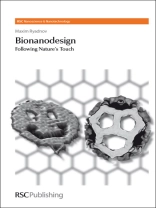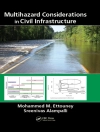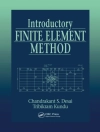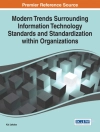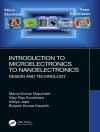The progress of today’s science and technology encounters an increasing demand for finer and more efficiently performing materials with properties superior over those of current and hence ageing devices. Whether this is concerned with electronics or drug delivery, cancer diagnostics or alternative energy sources, the search for means of miniaturizing the existing materials or devising fundamentally new components with higher capacities appears to be relentless. A saving solution to this is widely proposed as the design and fabrication of nanostructures, molecular architectures with dimensions featured below 100 nm. Replicating Nature’s designs faithfully reproduced over millions of years provides perhaps the most straightforward route to success. Nature offers examples of nanodefined self-assemblies in virtually all levels of biological organization. However explicit guidance to the fabrication of functional or specialist nanostructures is of paramount importance.
Nanotechnology is often referred to as building nanoscale structures from bottom up. However, while it is visually clear what is at ‘up’ little is given and understood what is at the ‘bottom’. This new book gives the notion of and provides rules for building nanostructures from basics – the very bottom. The main objective of this publication is to bring together contemporary approaches for designing nanostructures that employ naturally derived self-assembling motifs as synthetic platforms.
The book has been written to satisfy the demands that motivate the search for and principles that prove to help the design of novel nanostructures. The overall goal is to compile the existing understanding of rules that govern biomolecular self-assembly into a practical guide to molecular nanotechnology. It is written in the shape of a review referenced as fully as permissible within the context of biomolecular design, which forms a general trend throughout.
The volume is composed of three core chapters focusing on three prominent topics of applied nanotechnology where the role of nanodesign is predominant. The three key areas from which popular highlights can be drawn are:
-employing the genetic repository, DNA, for creating various geometric nanoscale objects and patterns
-the empirical pursuit of an artificial virus, a magic bullet in gene therapy
-designing artificial extracellular matrices for regenerative medicine
Specific applications that arise from designed nanoscale assemblies as well as fabrication and characterization techniques are of secondary importance and whenever they appear serve as progress and innovation highlights.
The book takes an unconventional approach in delivering material of this kind. It does not lead straight to applications or methods as most nanotechnology works tend to do, but instead it focuses on the initial and primary aspect of ‘nano’ rather than on ‘technology’. Nanodesign is unique in its own field – illustrations are essential and the cohort of brilliant bioinspired designs reported to date form a major part of the publication. In addition, key bibliographic references are covered as fully as possible. A special appendix giving a short list of leading world laboratories engaged in bioinspired nanodesign is also included.
Table des matières
1 – Introductory notes;
Inspiring hierarchical;
Encoding instructive;
Starting lowest;
Picturing biological;
2 – Re-cycling hereditary;
Coding dual;
Deoxyribonucleic;
Building up in two;
Keeping in shape;
Priming topological;
Re-sequencing basic;
Choosing the fittest;
Evolving diverse;
Primary motifs;
Gluing universal;
Alienating axial;
Fixing spatial;
Hinting geometric: secondary motifs;
Crossing double;
Reporting visible;
Translating symmetrical;
Extending cohisive;
Sharing mutual;
Multiplying traversal;
Tiling square;
Scaffolding algorithmic;
Pursuing autonomous;
Lengthening to shorten;
Gathering to limit;
Assigning arbitrary;
Synchronizing local;
Prescribing general;
Adding up to third;
Wrapping to shut;
Framing to classify;
Outlook;
References;
3- Re-caging within;
Enclosing to deliver;
Transporting foreign;
Fitting flat and straight;
Spiralling along;
Packing out and in;
Spooling around;
Tunnelling through;
Escaping walled;
Capturing on and off;
Storing exchangeable;
Reacting nano;
Clustering spherical;
Contriving consistent;
Scaling hosting;
Following linear;
Channelling inner;
Converting outer;
Repairing from inside;
Uninviting levy;
Necessitating exterior;
Antagonising dressing;
Buffering masking;
Renting occasional;
Phasing wet;
Facing concentric;
Encircling between;
Singling out unique;
Sharing the balance;
Driving symmetrical;
Sealing annular;
Outlook;
References;
4 –
Re-assembling multiple;
Keeping all in touch;
Unravelling the essential;
Winding three in one;
Aligning stagger;
Tapering polar;
Branching and stretching;
Replicating apparent;
Scrapping refusal;
Tempting compatible;
Likening synthetic;
Recovering intelligent;
Restoring available;
Prompting longitudinal;
Invoking granted;
Reposing modular;
Displacing coil;
Settling lateral;
Bundling exclusive;
Permitting distinctive;
Inviting captive;
Clearing limiting;
Equilibrating transitional;
Extracting minimal;
Gambling beyond;
Guiding proliferative;
Feeding proximate;
Rooting renewal;
Accepting inescapable;
Patterning positional;
Relating interfacial;
Grafting integral;
Outlook;
References;
5 –
Concluding remarks;
Learning fluent;
Parsing semantic;
Drawing pragmatic;
6 – Revealing contributory
A propos de l’auteur
Max Ryadnov leads Biometrology research area at NPL. He is also a visiting Professor at King’s College London and a Fellow of the Royal Society of Chemistry and the Royal Society of Biology. Max obtained his MSc in Biochemistry (summa cum laude) from the Russian Academy of Sciences and Ph D in Chemistry from Moscow State University. Following his academic tenures at Bristol (URF) and Leicester (Lecturer), he joined NPL as a Principal Research Scientist in 2010. Over the last 10 years, his contributions to physical and life sciences have been recognised by a NESTA Crucible Innovation Award, a SUPA lectureship in Chemical Physics with the University of Edinburgh and Fellowships in the Royal Society of Chemistry and the Royal Society of Biology. He has authored over 100 peer-reviewed publications (incl. primary reports in Angew Chem, JACS, Nature Mater, Nature Commun, PNAS), numerous book chapters, two books, several international patents, and is a co-editor of two RSC book series – Amino Acids, Peptides and Proteins and Synthetic Biology.
